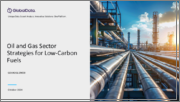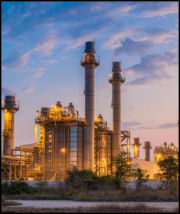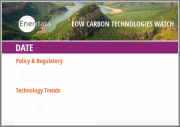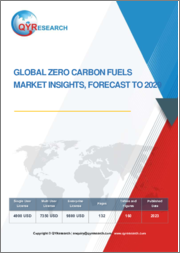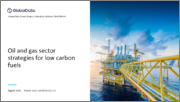
|
시장보고서
상품코드
1354363
저탄소 연료에 대한 석유 및 가스 부문의 전략 : 시장 개요, 생산 전망, 동향 및 분석Oil and Gas Sector Strategies for Low Carbon Fuels Market Overview, Production Outlook, Trends and Analysis |
||||||
석유 및 가스 산업은 현재 많은 문제에 직면해 있으며, 그 중에서도 제품의 탈탄소화에 대한 압력이 가장 큽니다. 재생가능 디젤, SAF, 합성연료와 같은 저탄소 연료는 석유 및 가스 산업이 기존 소비자 산업에 제품 및 서비스를 계속 제공할 수 있는 탈탄소화의 길을 제공합니다. 석유 및 가스 기업들이 저탄소 연료 시장에 진입하기 위해 모색하고 있는 전략은 다양합니다. 재생가능 디젤과 SAF는 코프로세싱이나 수소화 처리 장비를 재사용하여 기존 정유공장을 전환하여 생산할 수 있습니다. 재생가능 디젤과 SAF 생산 능력의 대부분은 독립형 재생에너지 프로젝트가 담당할 것으로 보입니다. 한편, 석유 및 가스 기업은 합성 연료를 생산하기 위해 수소 공급업체와 협력하거나 자체 수소 생산 설비에 투자해야 합니다. 이들 저탄소 연료의 생산은 각각 증가할 것으로 예상되지만, 현재로서는 기존 연료와 비용 경쟁력이 없습니다는 고유한 문제가 있습니다. 전체적으로 SAF는 2018-2030년 CAGR이 49.8%로 가장 높은 성장세를 보이며 석유 및 가스 산업에서 가장 유망한 분야가 될 것으로 보입니다. 반면, 재생가능 디젤 생산량은 같은 기간 동안 13.1% 증가할 것입니다. 문제는 2030년까지 합성 연료가 아직 개발 중인 기술이라는 점입니다.
이 보고서는 저탄소 연료에 대한 석유 및 가스 부문의 전략을 조사하고, 기존 석유 및 가스 인프라와 인력의 기술 및 전문성을 바탕으로 재생가능 디젤, 지속 가능한 항공 연료(SAF), 합성 연료를 중점 분야로 선정하여 저탄소 연료의 생산 전망을 평가하고 석유 및 가스 기업의 최대 기회와 전망을 제시합니다. 석유 및 가스 기업에게 가장 큰 기회와 향후 전망 등을 제공합니다.
목차
- 주요 요약
- 석유 및 가스 부문 저탄소 연료 전략
- 석유 및 가스 부문 과제
- 저탄소 연료 시장 석유 및 가스 주력 분야
- 당사가 주력 하는 저탄소 연료 서론
- 재생 연료에의 이동을 향한 부문 전략
- 변환/코프로세스 정유소 vs. 스탠드얼론 프로젝트
- 재생 디젤
- 재생 디젤 생산 전망
- 재생 디젤 현재 시장 리더
- 2030년 생산능력까지 최대 규모 재생 디젤 프로젝트
- 석유 및 가스에 관한 기업 신청 동향
- 소비와 거래 동향
- 지속가능한 항공 연료
- SAF 생산 전망
- 2030년 생산능력까지 최대 규모의 SAF 프로젝트
- SAF 현재 및 향후 시장 리더
- 석유 및 가스에 관한 기업 신청 동향
- 거래 활동
- 합성연료
- 생산 전망
- 석유 및 가스 합성연료 기업
- 문의
Abstract
The oil and gas industry currently faces numerous challenges, but the pressure to decarbonize its products is arguably the largest. Low carbon fuels such as renewable diesel, SAFs, and synthetic fuels offer a route to decarbonization that allows the industry to continue providing products and services to its existing consumer industries. There are a number of strategies that oil and gas players are exploring to branch into the low carbon fuels market. Renewable diesel and SAFs can be produced through coprocessing or the conversion of existing refineries by repurposing hydrotreating equipment. Standalone renewable projects will contribute the majority of production capacity for renewable diesel and SAFs. Meanwhile, oil and gas players will need to engage with hydrogen suppliers or invest in their own hydrogen production facilities to produce synthetic fuels. The production of each of these low carbon fuels is expected to increase, but all come with their own set of challenges, namely that they are currently not cost competitive with conventional fuels. Overall, SAFs will experience the strongest growth, with a CAGR of 49.8% between 2018- 2030 and, as a result, represent a promising area for the oil and gas industry. Meanwhile, renewable diesel production will increase by 13.1% across the same time frame. Production challenges will see synthetic fuels remains a nascent technology in the run up to 2030.
Amid increasing pressure to decarbonize and diversify its products, this report outlines oil and gas sector strategies within the low carbon fuels market. The report identifies renewable diesel, sustainable aviation fuels (SAFs), and synthetic fuel as key focus areas based on existing oil and gas infrastructure as well as workforce skills and expertise. The report assesses the production outlook for each of these low carbon fuels and indicates the biggest areas of opportunity for oil and gas players.
Key Highlights
- Larger production capacities of renewable fuels are typically being achieved by renewable standalone projects, where construction is not hampered by an existing refinery footprint. Although these projects require a much higher capital expenditure.
- Based on GlobalData's database of active and upcoming renewable refinery projects, renewable diesel production is expected to exceed 8,900 mmgy by 2030.
- Only 4 of the top 10 integrated oil and gas companies by market capitalization feature in our renewable diesel ranking by capacity.
- Taking together both active and pipeline production capacity, SAF production is expected to exceed 6,100 mmgy in 2030.
- Low synthetic fuel production is partly due to the early stages of this technology and the challenges of achieving economically viable production on a commercial scale.
Scope
- Renewable diesel production outlook
- Renewable diesel upcoming projects
- SAFs production outlook
- SAFS upcoming projects
- Synthetic fuels production outlook
- Low carbon fuel deal activity within oil and gas
- Company filing trends within low carbon fuels
Reasons to Buy
- Obtain the most up to date information on recent developments and policies related to oil and gas sector strategies in the low carbon fuels segment.
- Identify the opportunities of challenges associated with the switch form oil refining to renewable refineries for crude oil refiners.
- Gain insight into the production outlook for renewable diesel, SAFS, and synthetic fuels.
- Assess competitors based on their active and pipeline capacities for low carbon fuel production and gain an overview of largest upcoming renewable refinery projects.
Table of Contents
Table of Contents
- Executive Summary
- Oil and Gas Sector Strategies for Low Carbon Fuels
- Oil and gas sector challenges
- Oil and gas focus areas in the low carbon fuels market
- Introduction to our focus low carbon fuels
- Sector strategies for transitioning to renewable fuels
- Converted/ coprocessing refineries vs standalone projects
- Renewable Diesel
- Renewable diesel production outlook
- Current market leaders in renewable diesel
- The largest renewable diesel projects by 2030 capacity
- Company filing trends in oil and gas
- Consumption and deal trends
- Sustainable Aviation Fuel
- SAF production outlook
- The largest SAF projects by 2030 capacity
- Current and projected market leaders in SAFs
- Company filing trends in oil and gas
- Deal activity
- Synthetic Fuels
- Production outlook
- Oil and gas synthetic fuel players
- Contact us






